We touch on the highlights of the memorable Tau Herculid meteor shower and also report on the recent outburst of the recurrent nova U Scorpii.
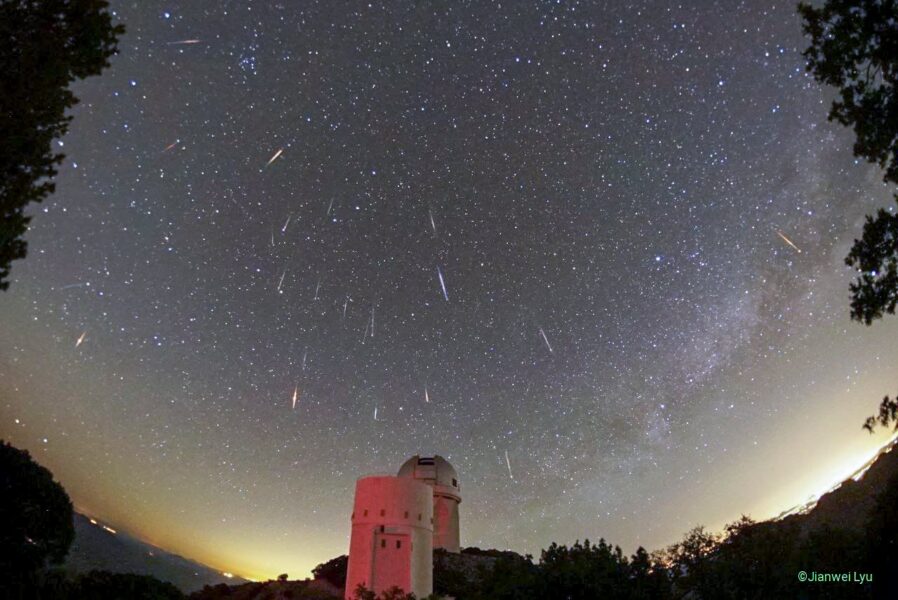
Copyright Jianwei Lyu
I walked out the door the night of the Tau Herculid shower secretly hoping for a repeat of the 1833 Leonid storm but also wise to nature's curve balls. Amateur astronomers live life in standby mode knowing that hopes and dreams can be dashed any moment by passing clouds or bad timing. And while the shower fell far short of a storm, the fact that it happened and arrived at the predicted time was nothing short of amazing. Equally astonishing, my Tau Herculid tally exceeded mosquito bites received by 23 to 2.
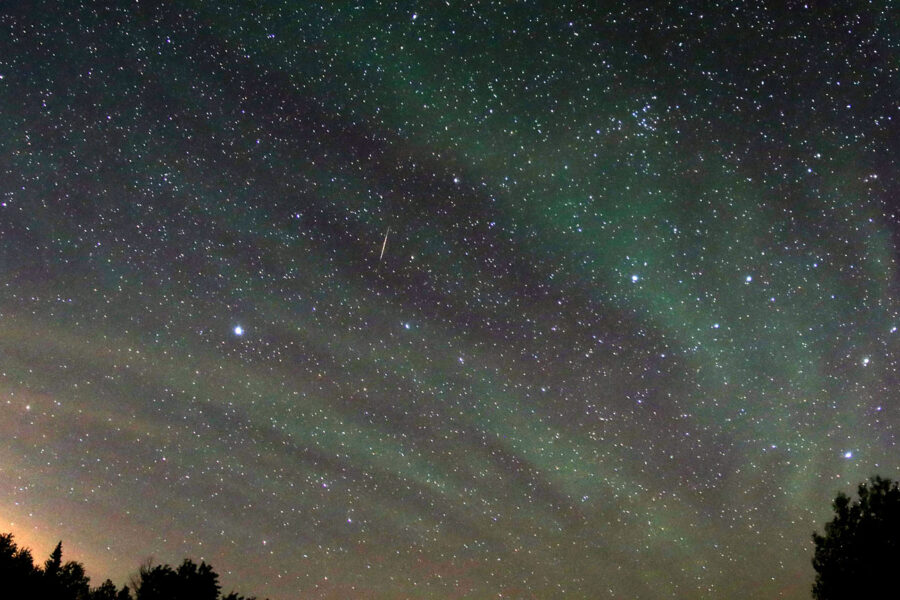
Bob King
The spatter of meteors that night originated from the breakup of the periodic comet 73P/Schwassmann-Wachmann 3 in 1995. The fragmentation of its nucleus into four separate mini-comets released a large quantity of dust as a thick filament that Earth would encounter 27 years later. Astronomy is as much hard science as a collection of stories pieced together though painstaking observation and experiment. In 1995, we watched the crumbling comet brighten to binocular visibility, saw its fragments become comets of their own in 2006 and witnessed the scintillating conclusion as dust literally arrived on our doorstep this May. Pieces of 73P continue to orbit the Sun as do streams laid down during previous apparitions. The story goes on.
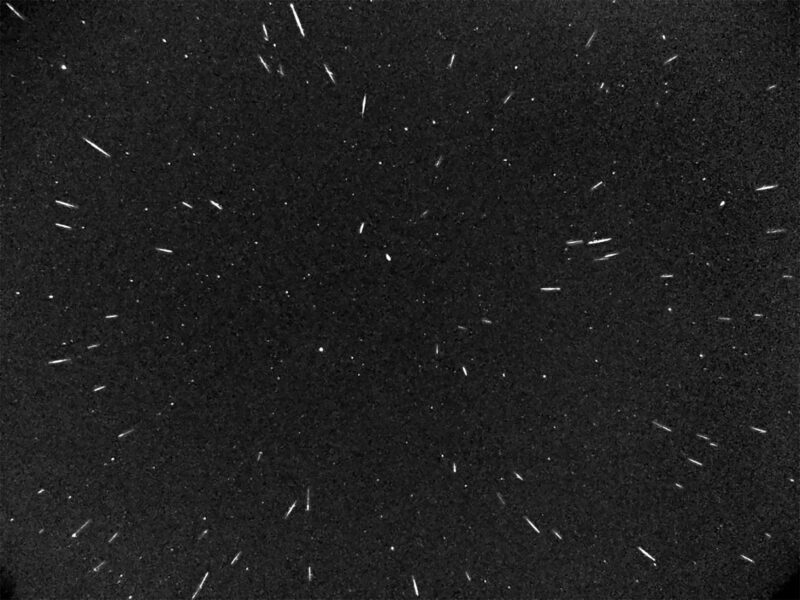
L. A. Boltryk
I saw almost two dozen Tau Herculids (TAH) and four sporadic meteors between 11:15 p.m. and 2 a.m. while resting comfortably on a reclining lawn chair next to a small pond loud with frogs. During part of that time, passing thunderstorms brought clouds, lightning, and even a brief rain shower. I so wanted to spot a meteor during a lightning flash, but that wish will have to wait another night.
Slow, short, and sweet
All the shower members pointed back to a radiant several degrees northwest of Arcturus and possessed strikingly similar qualities. They ranged from magnitude 1 to 3 (with the brighter ones glowing pale yellow), traveled slowly, and left short trails at most several degrees long. Strongest activity occurred between 11:15 p.m. and 12:30 a.m. CDT, then dropped off steeply. Others shared my experience:
"Observed the shower from Portal, Arizona, from 8:40 to 10:15 MST. It came in clusters with several-minute breaks between them. I saw 10 over the period, although I was taking breaks for equipment and nourishment. They were slow-moving, on the red side, and usually rather short. Two were longer and had weaving paths." — Randy Pfeifer
"We saw some of the brighter ones last night as strikingly orange." — John Briggs, Magdalena, New Mexico

International Meteor Organization
Contributing Sky & Telescope editor Joe Rao, who posted last week's shower update, also noted the slow speed and short trails but saw different colors:
". . . most of the meteors we saw were either slow, short, and were more whitish or yellow. The brightest meteor that I saw made a slow path through Ursa Major and left a three-second smoky trail, but was white . . . no color at all."
Skimpy shower shines this time
Rao added that the shower "should now really be reclassified as the 'Boötids' since the radiant was close to Arcturus." Tau Herculids typically radiate from near the 4th-magnitude star Tau (τ) Herculis. But the material predicted to strike Earth during the May shower stemmed from debris blasted forward of the comet rather than dust blown back tailward by solar radiation pressure. The displacement temporarily booted the radiant into Boötes.
Unlike other annual showers that reliably offer good shows, the TAH only occasionally produce meteors. Most years the shower is sparse or nonexistent. Exceptions happened in 2011 and 2017, when NASA's Cameras for All-Sky Meteor Surveillance (CAMS) captured images of a few meteors on each occasion.
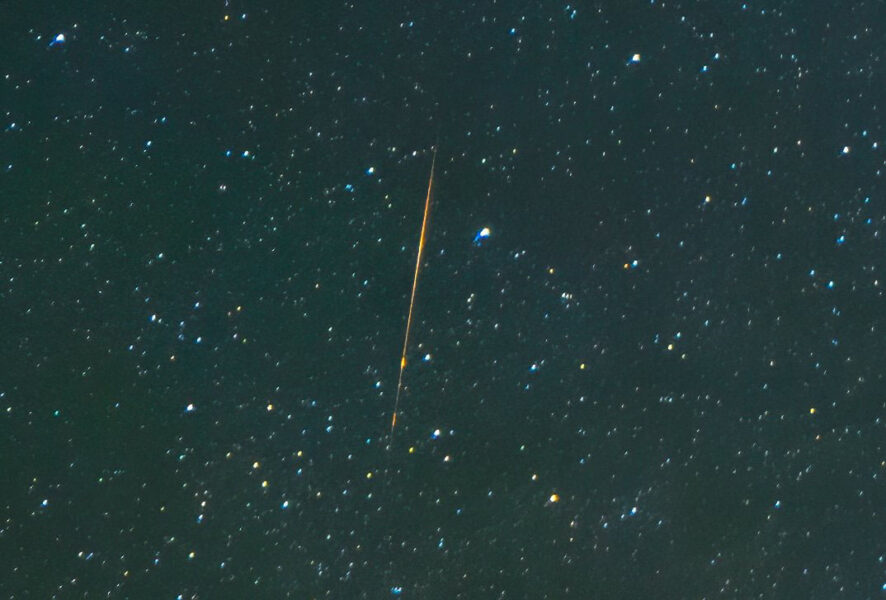
Harold Jerrell
Many observers remarked on how slowly the meteors traveled. Fast meteoroids strike the Earth like two cars in a head-on collision. That's what makes November's Leonids so zippy. They enter the atmosphere at more than 160,000 miles per hour (72 km/s) and produce numerous fireballs with long-lasting trains. The Tau Herculids, on the other hand, had to catch up to Earth the same way one car passes another on the freeway. Both are speeding along but moving slowly relative to each other. Arriving at a leisurely 36,000 miles per hour (16 km/s), it's no surprise shower members exhibited warmer colors and fewer bright meteors.
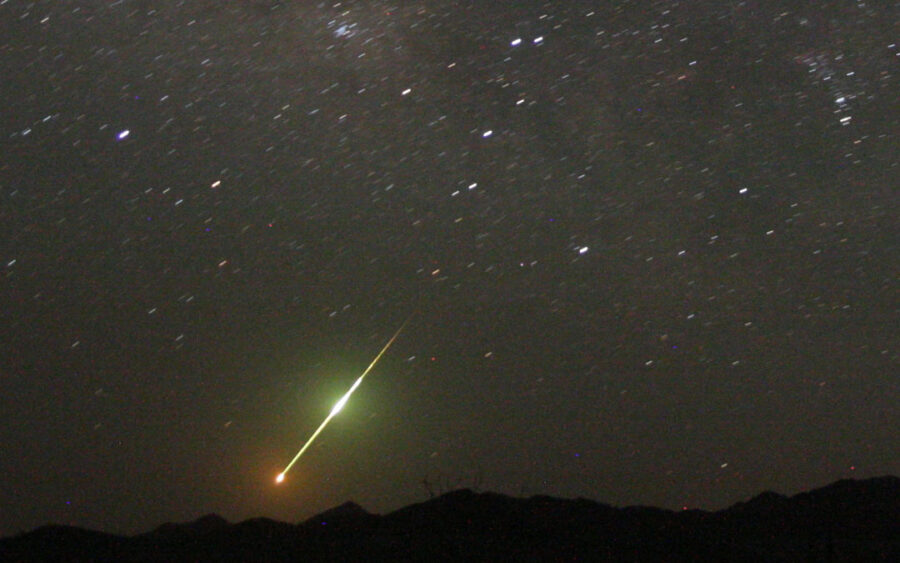
Copyright Javor Kac, courtesy of the IMO
While the Tau Herculids fell short of storm caliber, observers in darker locales saw a decent shower with real-world rates of around 15–20 per hour, on par with a solid performance of the Orionids or Lyrids.
Toward 2049
"I was generally pleased with what I saw," said Rao. "I can tell you that had Comet 73P/Schwassmann-Wachmann 3 arrived at the May 31st nodal crossing point before Earth did, that we likely would have seen a meteor storm. I daresay, we might have experienced something on the same par as the great Leonid displays of 1833 and 1966. Unfortunately, we reached the node about three months before the comet, so we had to hope that we would encounter material that was forward/in front of the parent body. It did . . . but unfortunately, not enough to create a storm."
Either way it doesn't appear there will be a repeat of the Tau Herculids soon. In their 2005 paper, "The τ Herculid Meteor Shower and Comet 73P/Schwassmann-Wachmann 3," Paul Wiegert and associates predict the next round of notable activity in 2049, when the Earth passes through a cluster of meteoroid filaments released during previous apparitions.
Recurrent nova U Scorpii has a blast!

Telescope Live / Ernesto Guido, Adriano Valvasori & Marco Rocchetto
Few stars brighten and fade as dramatically as U Scorpii. It belongs to a rare class of eruptive variables called recurrent novae, stars observed to "go nova" more than once. Only 10 are known, among them T Corona Borealis, RS Ophiuchi, and T Pyxidis.
All novae involve two stars in close orbit: a white dwarf and a main sequence or giant secondary star. The dwarf draws material (primarily hydrogen and helium) from the secondary, funneling it to its surface through an accretion disk. When enough gas has accumulated to reach a critical temperature and pressure, it ignites in a thermonuclear firestorm. The star ejects material into space at thousands of kilometers per second and brightens exponentially. At peak, U Scorpii shines some 100,000 times brighter than during quiescence.
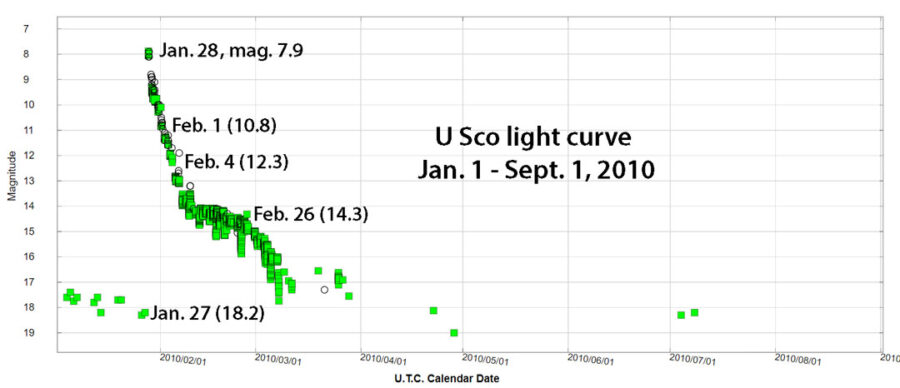
Courtesy AAVSO
Masayuki Moriyama of Japan discovered the star in outburst on June 6.72 UT, reporting that it had brightened from fainter than magnitude 17.3 a few hours earlier to magnitude 11.4. When I found it in 10×50 binoculars later that evening (June 7.17 UT), the star had risen to magnitude 7.8 — a leap of 9.5 magnitudes in just 14½ hours! U Scorpii is equally famous for its swift decline. Take a look at the light curve during the 2010 eruption, and you'll see what I mean. That's why you'll want to find and watch this star as soon as you can.
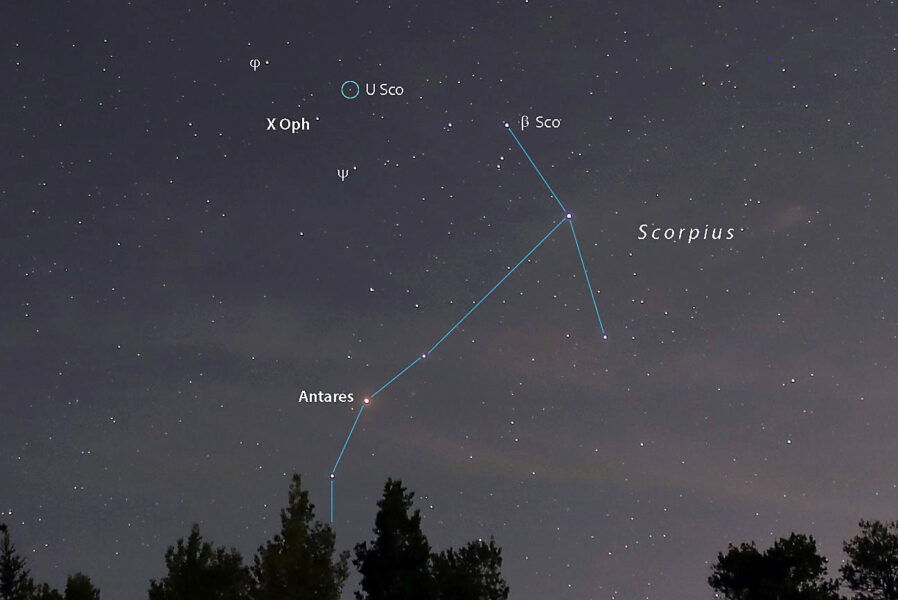
Bob King
U Scorpii is easy to find, located 4.5° northeast of Beta (β) Scorpii, and ready to hunt as soon as it gets dark. Beta is a good place to start. From there, star-hop eastward to to Phi (φ), Chi (χ), and Psi (ψ) Ophiuchi, which connect into a nice straight line slanted northeast to southwest. U Scorpii lies 1.2° northwest of the center star Chi. This AAVSO chart will get you there. Stars on the chart are labeled with magnitudes useful in estimating the nova's changing brightness. You'll have fun with this one. Just don't wait too long!
 5
5









Comments
ErnieOstuno
June 8, 2022 at 5:17 pm
I observed from Michigan from 12:15 AM to 2:45 AM EDT. Only saw 5 meteors during that time, only one of which I thought was part of the shower. There were a couple bright, short track meteors that left trails, but they didn't trace back to the radiant.
You must be logged in to post a comment.
Bob KingPost Author
June 8, 2022 at 8:11 pm
Hi Ernie,
I'm surprised you saw so few. Was light pollution an issue? My observations were from Bortle 3 skies (rural). While I didn't see many, there were enough to keep the momentum, so to speak.
You must be logged in to post a comment.
dranderson
June 8, 2022 at 6:21 pm
Observed from Suffolk VA. Maybe observed 5 from 0030 until 0230 EDT. Overall was disappointed after the hype the media put out.
You must be logged in to post a comment.
Chris-Schur
June 10, 2022 at 2:18 pm
Nice collection of images! We watched here in northern Arizona for about an hour, and were seeing around 1 per minute at the showers peak. lot of them were slow fireballs, maybe because they were all near the radiant.
You must be logged in to post a comment.
Gg
June 11, 2022 at 4:47 pm
We had nothing that appeared related to Bootes or Arcturus in N. Alabama. We have 4 Bortle skies per Clear Outside. Watched from 11:30PM until 3:00AM CDT. Counted maybe 4 or 5 meteors, lightning bugs confused the count. Se we actually had fewer meteors than an average night.
Looks like whatever Tau Herculid meteors there were, were bunched up and only rained down in spots.
The Zenithal Hourly Rate chart shows they arrived more than an hour ahead of the time predictions that I heard.
You must be logged in to post a comment.
You must be logged in to post a comment.